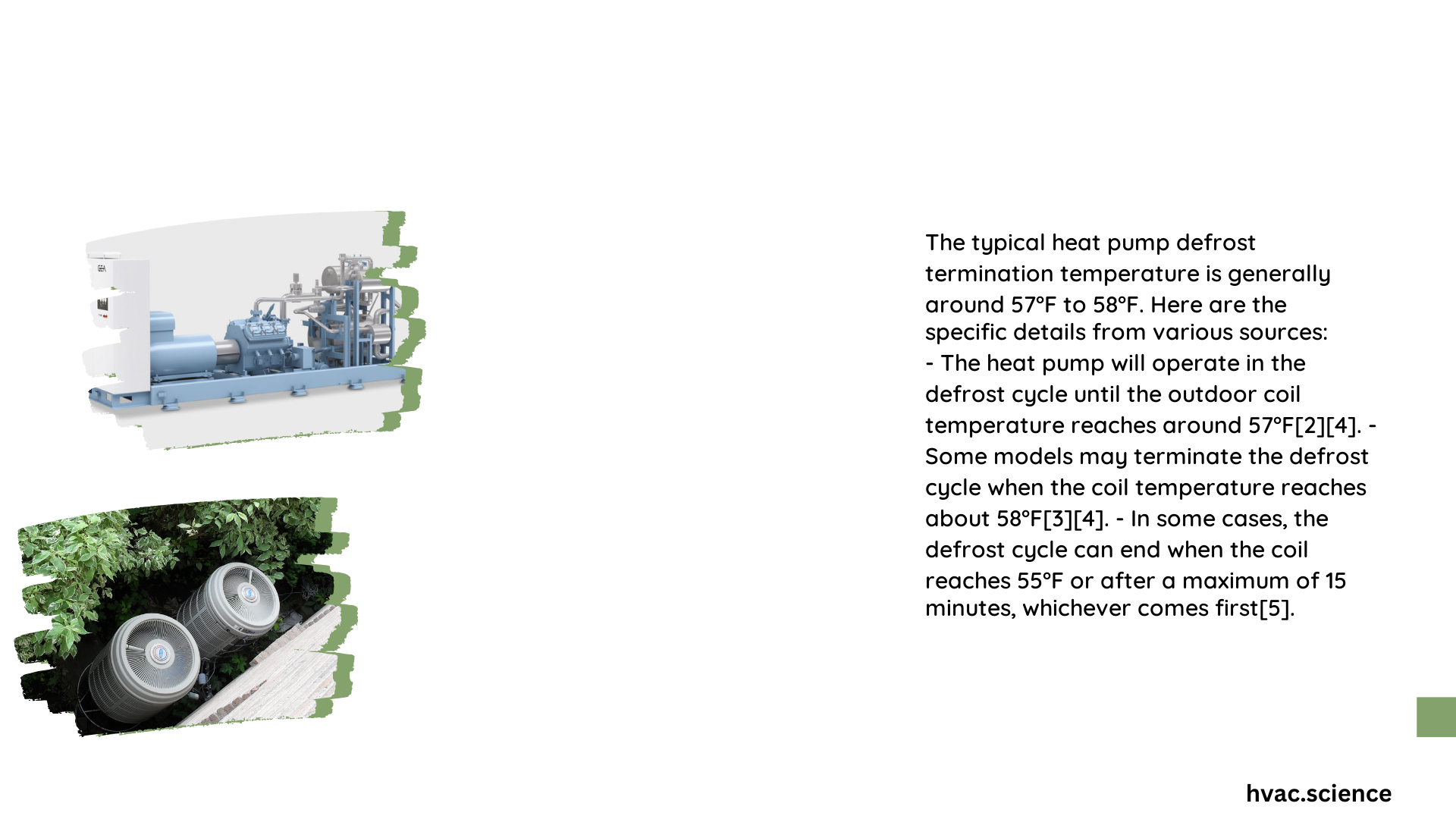The typical heat pump defrost termination temperature is a crucial setting that determines when the defrost cycle ends. This temperature is typically set between 55°F and 57°F (13°C to 14°C). At this point, the frost on the outdoor coil should be completely melted, allowing the heat pump to resume normal operation. Understanding this temperature setting is essential for maintaining optimal heat pump performance and energy efficiency.
What Factors Influence the Defrost Termination Temperature?
Several factors can influence the optimal defrost termination temperature:
- Climate: Colder regions may require higher termination temperatures to ensure complete defrosting.
- Humidity: Areas with high humidity might need more frequent or longer defrost cycles.
- Heat Pump Model: Different manufacturers may recommend varying termination temperatures.
- System Efficiency: Higher termination temperatures can lead to increased energy consumption.
How Does the Defrost Cycle Work in Heat Pumps?

The defrost cycle in heat pumps is a critical process that prevents ice buildup on the outdoor coil. Here’s a step-by-step breakdown:
- Frost Detection: The system detects frost formation, typically when the outdoor coil temperature drops to around 32°F (0°C).
- Cycle Initiation: The heat pump reverses its operation, switching to cooling mode.
- Defrosting: Hot refrigerant is sent to the outdoor coil to melt the frost.
- Termination: The cycle ends when the coil reaches the set defrost termination temperature (usually 55-57°F).
What Are the Common Defrost Termination Temperature Settings?
While the typical range is 55-57°F, some manufacturers offer adjustable settings. Here’s a table showing common options:
| Setting | Temperature | Recommended Use |
|---|---|---|
| Low | 50°F (10°C) | Very cold climates |
| Standard | 55-57°F (13-14°C) | Most situations |
| High | 70°F (21°C) | High humidity areas |
| Maximum | Up to 110°F (43°C) | Special cases (not recommended for regular use) |
Why is the Defrost Termination Temperature Important?
The defrost termination temperature plays a crucial role in heat pump efficiency and performance:
- Energy Efficiency: A properly set temperature ensures the defrost cycle doesn’t run longer than necessary, saving energy.
- Frost Prevention: It helps prevent ice buildup, which can damage the system and reduce efficiency.
- System Longevity: Correct settings reduce wear and tear on the heat pump components.
How Can You Optimize Your Heat Pump’s Defrost Settings?
To optimize your heat pump’s defrost settings:
- Consult your manufacturer’s recommendations.
- Consider your local climate and humidity levels.
- Monitor your system’s performance and adjust if necessary.
- Have a professional HVAC technician review and optimize your settings annually.
What Are the Signs of Improper Defrost Termination Temperature?
Watch for these signs that may indicate an improper defrost termination temperature:
- Excessive ice buildup on the outdoor unit
- Frequent or prolonged defrost cycles
- Reduced heating efficiency
- Unusual noises during defrost cycles
How Does Defrost Termination Temperature Affect Energy Consumption?
The defrost termination temperature directly impacts energy consumption:
- Lower Temperatures: May lead to incomplete defrosting, reducing efficiency.
- Higher Temperatures: Can cause unnecessary energy use by extending the defrost cycle.
- Optimal Setting: Balances complete defrosting with minimal energy use.
A study by the Department of Energy found that optimizing defrost settings can improve heat pump efficiency by up to 10%.
What Role Does Humidity Play in Defrost Termination?
Humidity significantly affects the defrost process:
- High Humidity: Increases frost formation, potentially requiring higher termination temperatures.
- Low Humidity: May allow for lower termination temperatures and shorter defrost cycles.
- Seasonal Changes: Defrost settings may need adjustment based on seasonal humidity variations.
Can Defrost Termination Temperature Be Adjusted by Homeowners?
While some heat pumps offer user-adjustable settings, it’s generally recommended that homeowners:
- Consult their user manual for specific instructions.
- Contact a professional HVAC technician for adjustments.
- Avoid making changes without proper knowledge, as incorrect settings can lead to system inefficiency or damage.
How Often Should Defrost Settings Be Reviewed?
To ensure optimal performance:
- Review settings annually, preferably before the heating season.
- Schedule professional maintenance checks at least once a year.
- Monitor system performance and consult a technician if you notice any issues.
By understanding and properly managing your heat pump’s defrost termination temperature, you can ensure efficient operation, reduce energy costs, and extend the life of your system.
References:
1. InterNACHI – Defrost Cycle of a Heat Pump
2. HVAC-Talk – Defrost Termination Temperature Debate
3. HVAC.com – What is heat pump defrost mode?
